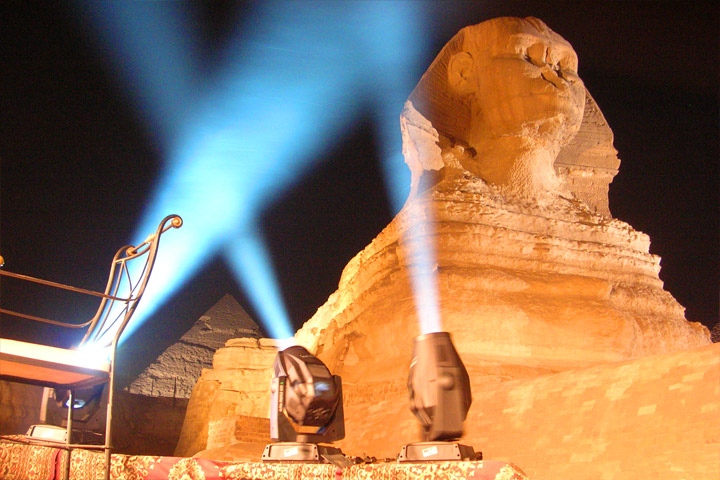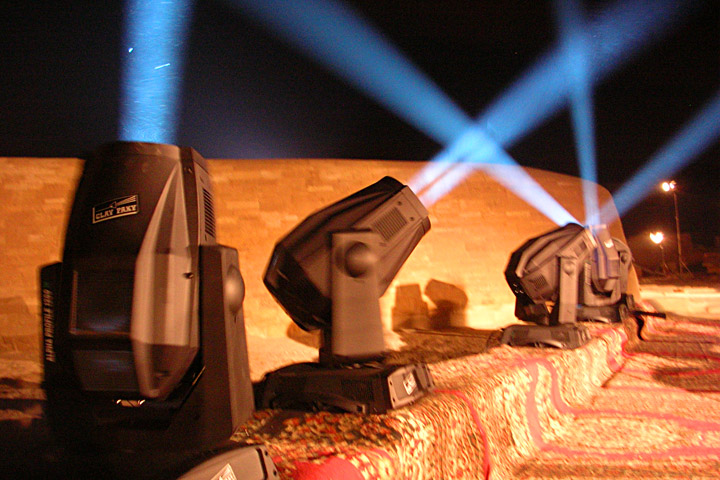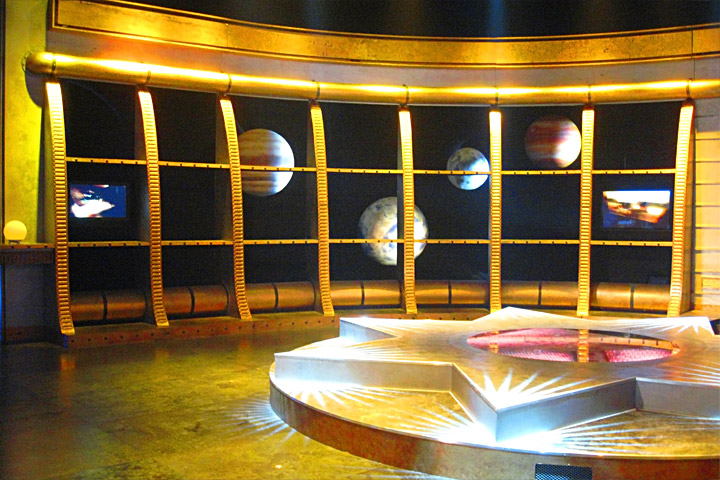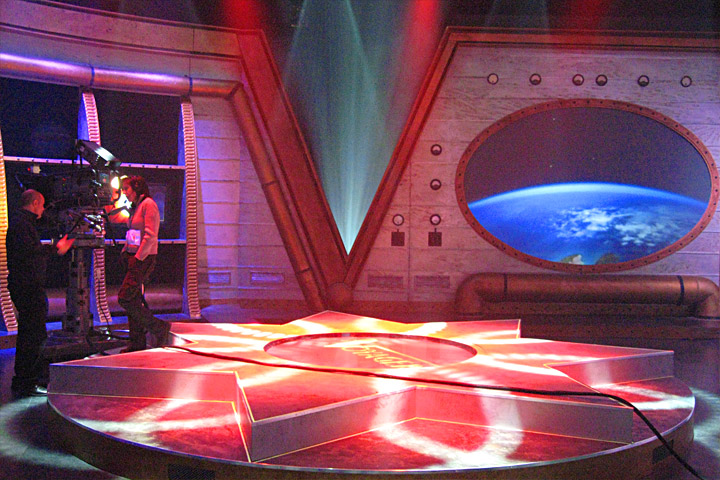What does the Sphinx represent? What mysteries surround it? There is a theory that ancient Egypt’s monuments are a reproduction on Earth of a map of the stars. Is it true? Directly from Egypt, Roberto Giacobbo and the crew of Voyager – renowned scientific and cultural program on RAI TV 2 – lit up the prime time with an exclusive program devoted to the wonders of the Nile’s ancient civilisation.
The program alternated between studio segments and taping done directly on the Giza Plateau with the Sphinx and pyramids as a stunning backdrop. In recent years, this studio production has taken place in a modern, ultra-technological setting replete with video walls and special lighting effects, further enhanced by spectacular camera angles and movements (overhead, ground level slowly closing in on presenter). Franco Rondana, photography director, used Clay Paky projectors: 90 of them, including the Alpha Profile 1200, Alpha Spot HPE 575, Alpha Wash Halo 1000 and Mini Scan HP3, all supplied by DI and DI.
For the special episode broadcast from Egypt, the photography director employed 60 other Clay Paky projectors. His words: “Voyager is a compelling mix of entertainment, culture and science due to modern editing and shooting techniques that create suspense, but also thanks to the use of professional lighting projectors. For the “night of the Pharaohs” we took modern technology to ancient Egypt to create a unique meeting of cultures that are millenia apart.”
Franco Rondana also told us that building a light set in the desert was a fascinating experience. It was completely dark. Even the tiniest light signal could be seen hundreds of metres away. It isn’t hard to imagine the effect of 1200 watt projectors in such a setting.
The light effects consisted mainly in projecting a dynamic array of light beams skyward, further enhanced by windblown sand. Still projectors were also installed to back-light the Sphinx, already with its own lighting, in order to embellish its majesty, all the while respecting its artistic worth. For this reason, the Voyager program logo was projected onto the monument’s rear base. “Projecting a logo on the front part would have been irreverent indeed,” admitted Rondana.
The photography director was very enthusiastic about the reliability of Clay Paky projectors. “There was so much wind in the desert, and we were concerned that it might damage the lighting system. In the hope of limiting damage, we assembled and disassembled the lighting layout before and after each recording, taking care to return products to their flight cases. Undoubtedly, the quality and reliability of Alpha projectors were an enormous help. After three days of shooting in severe conditions for a projector, there was not even the slightest problem.”












